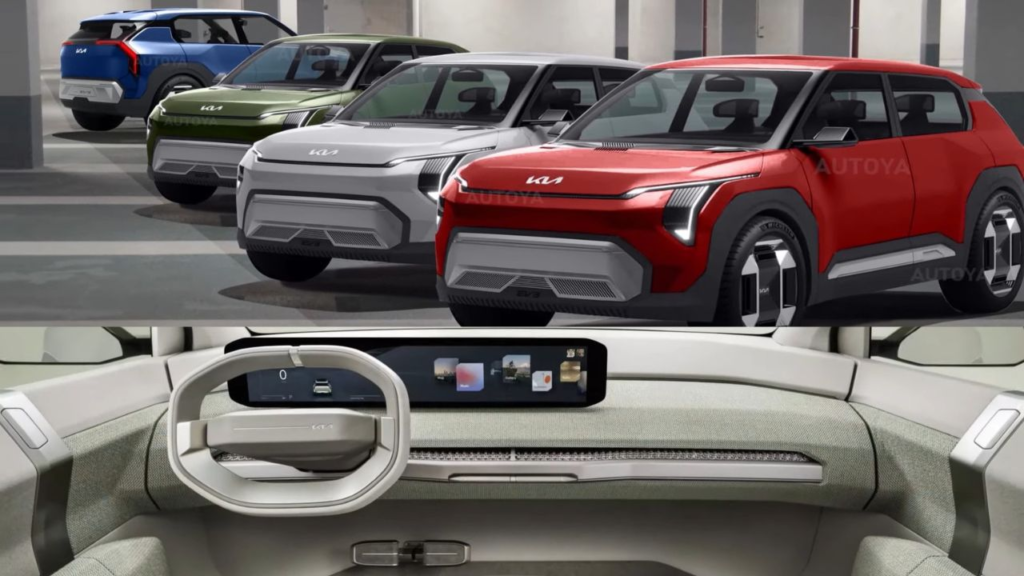The electric vehicle (EV) market in the United States is booming in terms of sales — but not for everyone. While companies like Tesla, Ford, and Hyundai are seeing rising demand, Kia Motors has suffered a surprising crash in EV sales in the USA. Recent reports show that Kia’s EV deliveries have dropped sharply in Q1 2025, raising concerns and questions in the automotive world.

Many experts believe this fall may be linked to a recent manufacturing change made by the company. So what really happened to Kia’s electric vehicle strategy in the US? Is it just a temporary slowdown or a sign of deeper problems?
Let’s break it down.
Kia’s EV Sales in the US: The Numbers Don’t Lie
In the first quarter of 2025, Kia delivered only 2,187 electric vehicles in the U.S. market. That’s a significant drop from the 5,945 units sold in Q1 2024 — a 63% decrease, according to Kia’s official data.
The fall was especially sharp for the Kia EV6, the brand’s flagship electric crossover SUV. Once considered a top competitor to the Tesla Model Y and Ford Mustang Mach-E, the EV6 saw a sharp decline in demand in Q1 2025.
Link to source:
Kia Q1 2025 Sales Report
What Changed? Manufacturing Location Shift to Blame?
Industry insiders point to a key change in Kia’s EV manufacturing strategy: the company has paused imports of Korean-made EV6 models to the U.S., preparing instead to launch locally assembled EVs in Georgia.
This shift was meant to comply with the Inflation Reduction Act (IRA), a U.S. law that provides tax credits of up to $7,500 for electric vehicles only if they are assembled in North America.

Kia’s strategy aimed to boost future sales by qualifying for tax credits, but it may have backfired — at least in the short term.
Since no new EV6 vehicles were shipped from Korea during Q1, inventory in U.S. dealerships has dried up. That could explain the dramatic fall in sales.
Link to law:
Inflation Reduction Act EV Tax Credit Rules
A Short-Term Setback or a Long-Term Risk?
Some analysts believe this is a temporary supply-chain issue that will correct itself once Kia begins local production of EVs in West Point, Georgia.
Kia’s parent company, Hyundai Motor Group, is investing $5.5 billion in a new EV plant in Georgia, expected to start production in late 2025. Until then, however, Kia’s EV offerings in the U.S. may continue to struggle.
But others warn that the EV market moves fast — and any delays can cost market share.
“Consumers are not going to wait for your EV. If you don’t have supply, they’ll go to your competitors,” said auto industry analyst Michelle Krebs in an interview with CNBC.
Link:
Hyundai-Kia EV Plant in Georgia
How Are Competitors Doing?
While Kia’s EV sales are falling, competitors are gaining ground:
- Tesla continues to lead, thanks to consistent production and price cuts.
- Ford has ramped up production of the Mustang Mach-E and F-150 Lightning.
- Hyundai (Kia’s sister brand) has kept its EV supply steady with the Ioniq 5 and Ioniq 6.
- Volkswagen is gaining traction with the ID.4, produced in Tennessee.
Kia’s temporary absence from the market gives these competitors more room to grow.
Link:
EV Market Share 2025 — CleanTechnica Report
Customer Reaction: Frustration and Disappointment
EV buyers who were waiting for the EV6 have taken to forums and social media to express their disappointment.
Many were hoping to take advantage of the tax credit and Kia’s quality but found that dealerships had no stock, and no new deliveries were expected soon.
Some have switched to other brands. One user on Reddit wrote:
“I was ready to buy a Kia EV6 in March 2025. No stock. Dealer told me to wait until July or later. I bought a Hyundai Ioniq 5 instead.”
What Kia Is Saying
In a press release, Kia acknowledged the slowdown, stating that:
“We are adjusting our supply chain and manufacturing plans to better align with U.S. EV policy and long-term market growth.”
The company says it is committed to building a strong EV presence in the U.S. and believes local production will boost future demand and competitiveness.
However, no clear timeline has been given for when U.S.-assembled EVs will be widely available.
Official statement link:
Kia Motors Press Room
What Happens Next?
Kia is betting big on its future EVs — including upcoming models like the Kia EV9, a full-size electric SUV. But until the Georgia plant becomes operational, Kia will have to manage supply shortages, customer dissatisfaction, and the risk of losing EV market share.
In the meantime, EV buyers in the U.S. looking for Kia models may have to wait — or choose another brand.
Conclusion: Manufacturing Strategy May Have Hurt Kia in Short Term
The crash in Kia’s EV sales in the USA is a clear warning that manufacturing decisions and government policy can directly impact market performance.
While the shift to local production could bring long-term benefits and tax incentives, the immediate impact is a significant drop in sales and lost momentum in a fast-growing EV market.
Kia still has time to recover — but it will need to act fast and communicate clearly with its dealers and customers.
More on EV Trends:
- Best EVs Under $50,000 in 2025
- Why Local Manufacturing Matters in the EV Race
- EV Tax Credit Rules Explained
Also read – Can This New US Economic Blueprint Save The Country?






